How the Light Gets In
My thoughts on MoMA's exhibition featuring lesser-known work of Georgia O'Keeffe, titled "To See Takes Time"
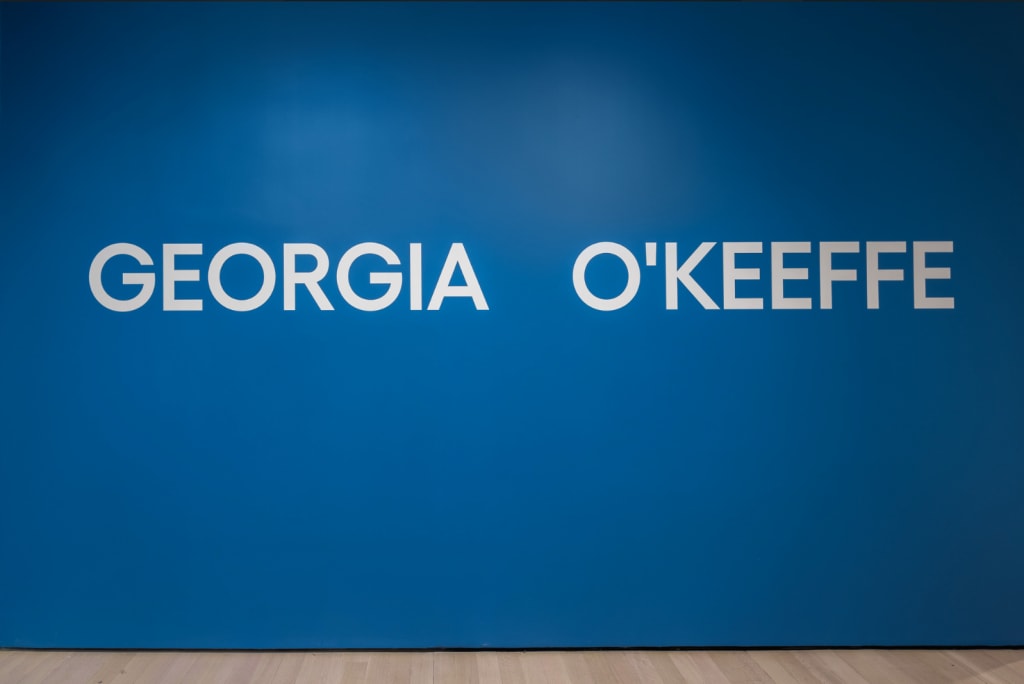
On Sunday, I joined two of my childhood friends at the Museum of Modern Art. Our main goal was to view "To See Takes Time," an exhibition of Georgia O'Keeffe's lesser-known works on paper.
Our visit was the culmination of a long-running joke from childhood. In fourth grade, the three of us were cast in our classroom's musical production of "Great Americans of the 20th Century." Alex was a Wright brother. Alana was a member of Henry Ford's production line. To my extreme mortification, I was Georgia O'Keeffe. The (gasp!) Vagina Painter, as many of my less mature classmates were sure to point out.
My piano teacher lent me a book of O'Keeffe's flower paintings to prepare for my role. Long after my bedtime, I flipped through the tome with a flashlight and the ringing of my classmate's jeers in my ears. I wasn't yet clear on what a vulva was supposed to look like, but I was sure they weren't blue, and I was sure they didn't have frills. Still, her flowers were sensual and evocative. They made me feel weird. Deciding I didn't get it, I put the book away.
I performed my campy role in an apron, holding a palette. "I paint flowers, I paint 'em big and wide," I sang to our gathered families. Those lyrics have become part of our friendship's language in the two decades since. All three of us have become artists in our own right: Alex is an engineer and a fashion designer, Alana is a graphic designer and a talented painter, and I'm a writer and a pastry chef. Together, we entered the exhibition and realized it was our first joint museum experience since a middle school field trip.
As I pursued a degree in Art History at Yale, I familiarized myself with the work of Georgia O'Keeffe. I learned to love the lush, ombré sweep of her soft-petaled flowers and their abstractions. I strenuously argued the same sorry case she did throughout her life: they're not vaginas, they're flowers. What others saw in the curves and lines of her work was their problem, not hers. I felt blissfully unsettled before her floating skulls and her desert landscapes. I finally 'got' her work.
In browsing the assorted sketches, watercolors, and early oil paintings of the exhibition online last week, I felt a note of dread mingle with my excitement. Some of them were just terrible. What I love about her celebrated works is their aura of otherworldliness and her mastery of subtle color gradation. Those qualities were hard to find in this curated collection, at least through the screen of my laptop.
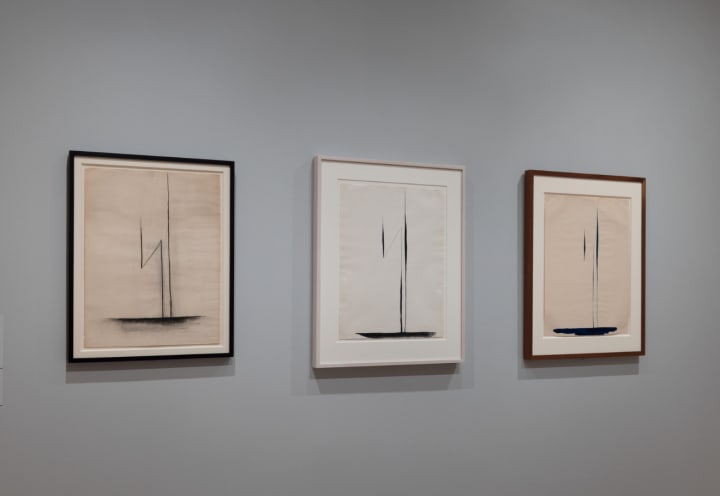
How wrong I was. Standing before her works from the years around World War One, the promise of her talent was clear. The themes, shapes, and obsessions that she explored throughout her six decades of work were all present and burgeoning. Even a simple series of lines, exploring the power of simple shapes and composition, held a raw and eerie power that reminded me of her later, much more intricate, skull paintings.

There is something remarkable about seeing an artist's process. In a series of paintings and sketches done of a circus tent, we could see what she kept and discarded with each iteration. In the first bare pencil sketch, the power of the triangular composition was clear. In her clumsy oil painting, we could see her struggle to find the colors that mattered. In her watercolors, we saw her strike upon a way to let the light in: by leaving the paper visible as a highlighted outline, rather than shading deeper in other sections.
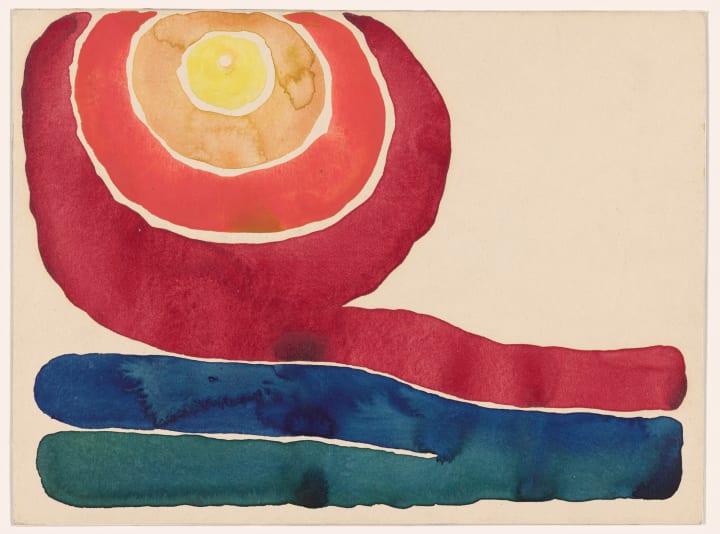
That unpainted line wound through most of our favorite paintings in that room. It spoke of boundaries and brightness, control and happenstance. In the sunset piece selected to be the exhibition's poster, it was the strong white line that allowed the shivering shifts of hue to shine. Where the line broke and bled, it brought a beautiful complication to her colors and her composition. I couldn't help but think of a line from my favorite Leonard Cohen song, Anthem, in which he sings "There's a crack in everything. That's how the light gets in."
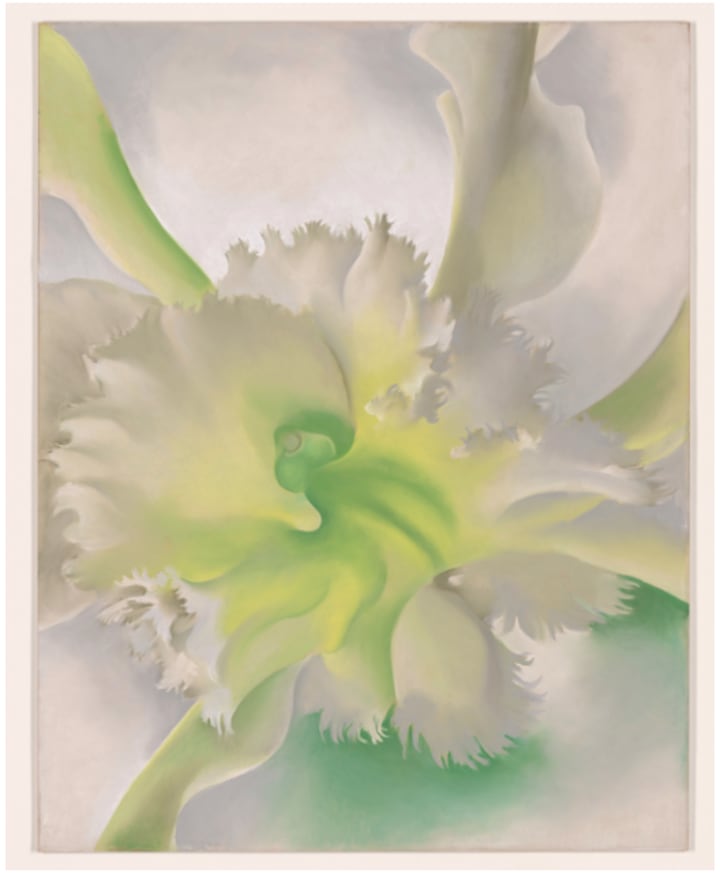
In the next room, her early explorations of flowers held court. There was a remarkable soft pastel piece of an orchid that was the obvious precursor to her later paintings. I was thrilled to see that same white line at the fuzzy boundaries of the petal's frills. It was that untouched line, the visible paper, which gave this piece its ethereal glow. I just know that every time I see a painting from her later, greater years, I'll be searching for a light at the edge.
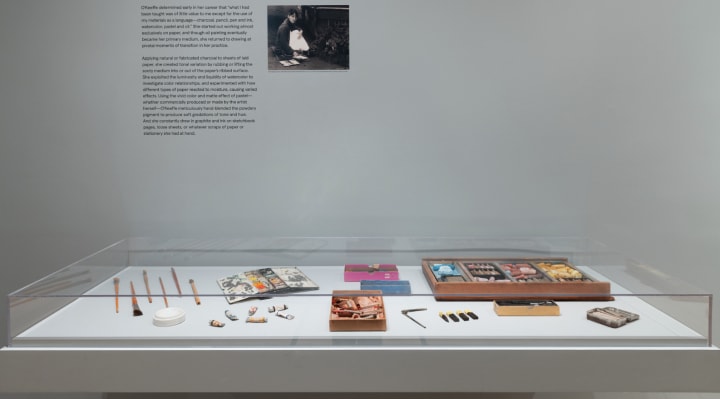
Before a collection of her tools and materials, my friends and I mused on our own artistic regrets. How wonderful it is, knowing how important O'Keeffe's art became, that her early work has survived and is viewable to the public. Her process is revealed to us over a century after she began, long after her death. We thought of all our own discarded journals and culled paintings that will never be part of our history, no matter how important we become to the world. We thought of the sketchbooks lost in our parents' moves, the experimental phases we went through and later scrubbed from social media, and the private tombs of our old, fried laptops - where our writing and digital creations lived for only our eyes and died there, too.
The title of the exhibition, "To See Takes Time," resonates through. O'Keeffe took her time to see what she needed from the world and her own art. I am also still learning from her that understanding takes time. It took me ten years to understand her flowers were not vaginas, and another ten to learn that they're not just flowers, either. They're the culmination of decades of her work and vision.
"To See Takes Time" is on at the MoMA through August 12th. Next time you're in NYC, stop in!
About the Creator
Reader insights
Outstanding
Excellent work. Looking forward to reading more!
Top insights
Excellent storytelling
Original narrative & well developed characters
Expert insights and opinions
Arguments were carefully researched and presented
Eye opening
Niche topic & fresh perspectives
Masterful proofreading
Zero grammar & spelling mistakes
Compelling and original writing
Creative use of language & vocab
On-point and relevant
Writing reflected the title & theme
Easy to read and follow
Well-structured & engaging content
Heartfelt and relatable
The story invoked strong personal emotions







Comments (4)
I think it was Neitzche that said (I paraphrase)... "everything evolving is underestimated". You captured this sentiment sincerely and eloquently here. A delightfully grounding and thoughtful article. Thank you.
What a cool look you got at the progression of one of the greats. Maybe there is a lesson in there about even the very best in their artwork had to start somewhere. Great article. Thanks for sharing.
Oh, I just love how you tied in the Cohen reference to this. What a perfect match. That phrase really made me take another look at the painting. Also, I love your personal story from when you were younger, and the fact that you got to go to this with the same friends! This was a wonderful piece. Congratulations on Top Story! 💗
Love this!!!❤️❤️💕 I discovered Georgia O'Keeffe's paintings at the Kimbell Museum 3 decades ago.